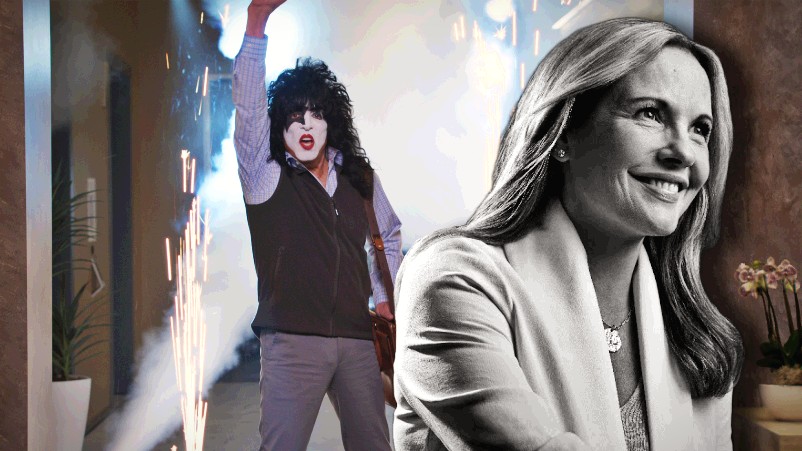71% of B2B ads are a waste of money, zero attention, zero sales: Why marketers should forget voiceovers and heavy text – and get the logo in much earlier
An Mi3 editorial series brought to you by
LinkedIn

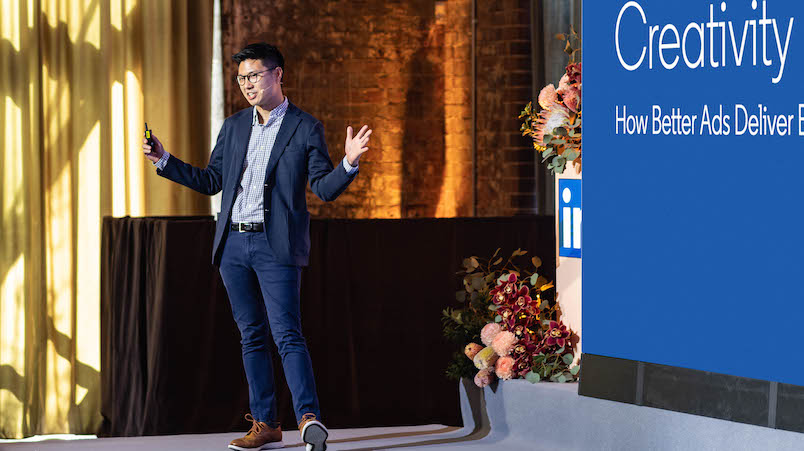
B2B Institute's Derek
An Mi3 editorial series brought to you by
LinkedIn

Creative eats targeting for breakfast, along with optimisation and every other factor marketers can control. Yet the vast majority of B2B ads are effectively a waste of space because they follow a tired formula – voiceovers, heavy on text, logo at the end – per a study of 600 ads by the B2B Institute. It found 71 per cent were highly unlikely to deliver any growth. To stop brands wasting money on "boring Power Point" ads, Partnerships Lead Derek Yueh unpacks some simple creative guidelines to help marketers stand a far better chance of delivering growth.
What you need to know:
- Creative is the single biggest factor that marketers can control in delivering growth from ads, beating targeting, optimisation – everything bar brand size, according to LinkedIn Institute’s Derek Yueh.
- Yet advertisers are getting creative wrong in their ads, resulting in poor effectiveness. 71 per cent of 600 ads studied had almost no chance of delivering growth.
- That’s because they tended to use the same formula: lots of text, a voiceover and a logo at the end.
- Brands need to get back to basics: Tell good stories, aim for memories over clicks, and weave the brand into those stories far more often – and much earlier.
Almost three quarters of B2B ads are effectively money down the drain. According to a study of 600 ads by the LinkedIn-backed B2B Institute, 71 per cent are likely to generate no sales. That’s because they are boring, formulaic, under-branded and have brand calls in the wrong places.
Derek Yueh, Partnership Lead at the B2B Institute, said B2B marketers should forget voiceovers and heavy text and start concentrating on story arcs, characters and everyday settings – while packing in brand cues early and often.
Speaking at the B2B Next conference in Sydney, Yueh cited research from Dentsu-owned Data2Decisions that suggests the most important element in driving returns from advertising is brand size and market share – over which marketers have no direct control. But the second most important aspect is creative execution, which is squarely within marketers’ power.
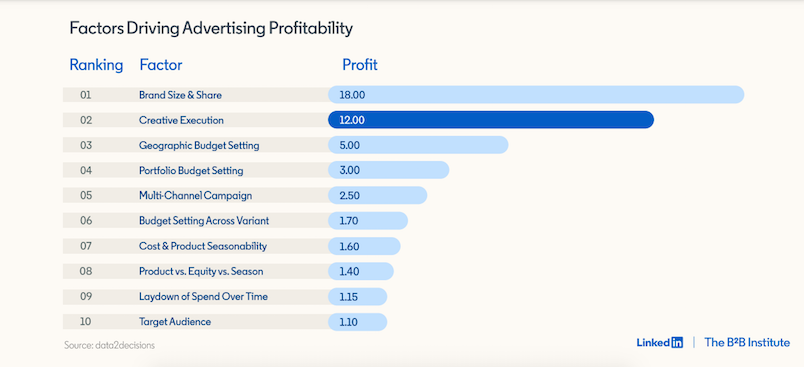
Yueh also cited Nielsen research which found creative, at 47 per cent, is the single biggest contributory factor to driving sales from advertising, alongside an Ehrenberg-Bass Institute paper which finds that great creative can drive 10-20 times more sales than mediocre creative.
“Basically … even if you optimise all the other elements of your ad campaign: If you find the best targeting, if you try to maximise reach, it ultimately doesn't matter if your creative isn't resonating with your audience,” was Yueh’s interpretation. “So in other words, if you can't get your creative right, nothing else really matters.”
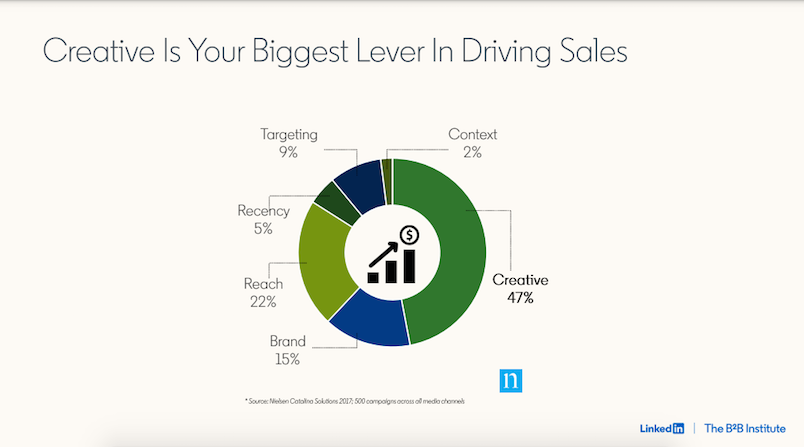
Aim for memorability, not clicks
Almost all B2B customers are out of market at any one time, per the 95:5 rule. Developed by the LinkedIn-funded B2B Institute with Professor John Dawes at the Ehrenberg-Bass Institute, the rule states that sales should focus on the five per cent of in-market customers and marketing on the remaining 95 per cent.
So instead of trying to generate clicks and leads, B2B ads should build memory structures to drive future sales and ensure the brand is top of mind when the buyer eventually comes to market.
The problem is, most B2B ads take the exact opposite approach. Yueh said marketers and agencies must flip priorities for their creative to succeed. Currently, the vast majority are “ad backwards”, he stated.
“Unfortunately, a lot of B2B creative isn’t very effective,” said Yueh. “In our most recent analysis of over 600 B2B ads, we saw that 71 per cent scored one star out of five stars” via an emotional response rating system designed by global marketing research agency System1. “What the chart (below) is really telling us is that most B2B ads aren't resonating with the audience on an emotional level, therefore they're not very memorable, therefore they're not expected to generate sales for their brand's bottom line.”
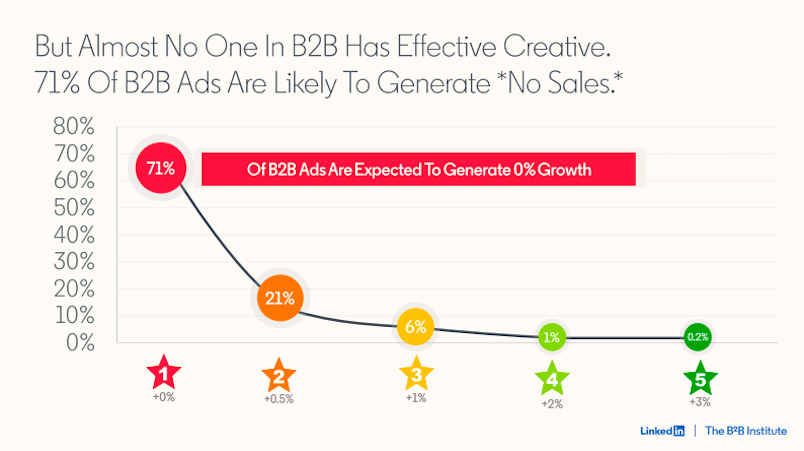
Why B2B ads are failing
Yueh said the reason B2B ads score so poorly is that they follow the same generic formula.
“A lot of B2B ads are just using voiceover on top of generic stock footage and they wait until the very last second to reveal their logo at the very end. Basically we're seeing that 80 per cent of B2B ads use a voiceover, but less than half actually use the story arc, and even fewer are using an opening card in the first few seconds, which are the most crucial seconds of an ad,” said Yueh.
Per the chart below, the most commonly used creative element is voiceover, used by 78 per cent of ads sampled – ad yet it is the least effective. The next least effective element is heavy use of text.
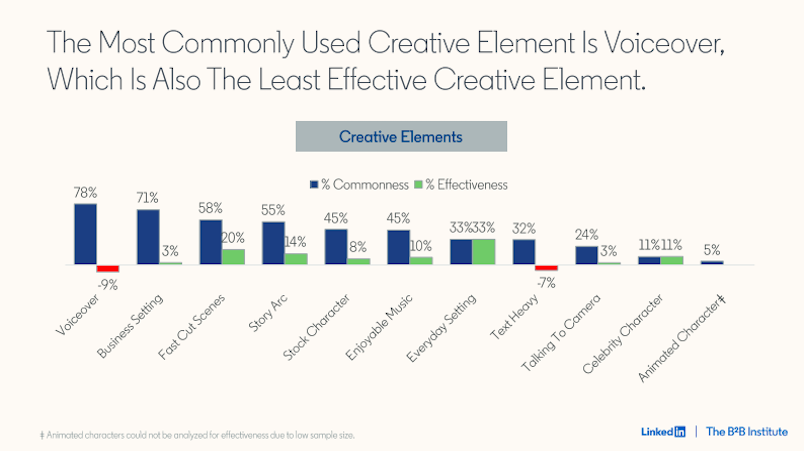
“We understand why B2B marketers want to use voiceovers and text. They're extremely flexible and they're a very alluring shortcut to cramming in as many different messages as possible,” said Yueh. “But we would have argued that a lot of these creative devices often become these creative crutches that prevent us from telling a truly engaging story.”
Worse, he added, those elements work counter to how the brain pays attention and processes new information.
“Studies show that the human brain is biologically hardwired to process faces. We're more likely to process faces at a faster speed than any other stimuli. But when we over rely on faceless voiceovers and we put big blocks of text on the screen, we're almost inviting our audience to not pay attention to our message.”
In other words, he suggested, “B2B ads often feel like a very boring PowerPoint presentation.”
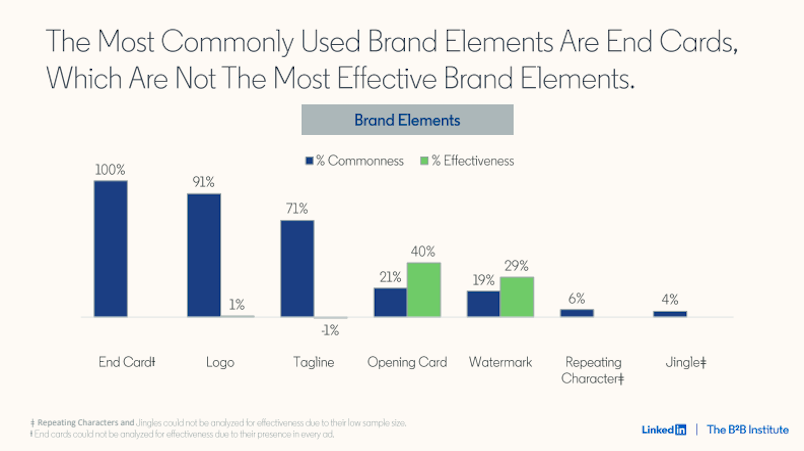
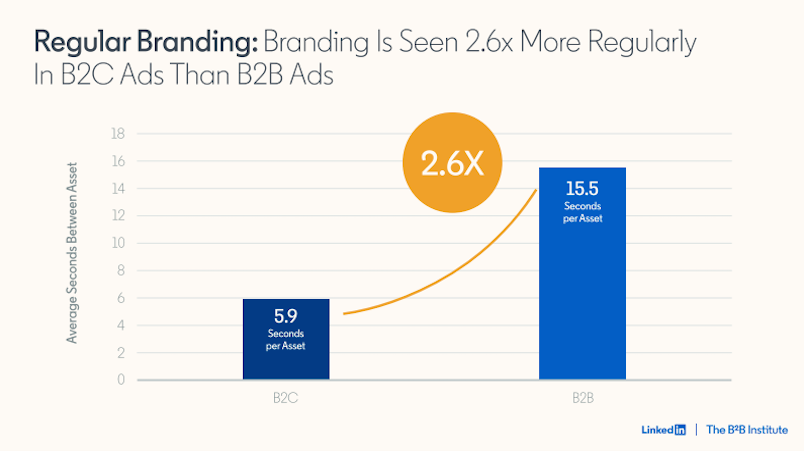
Make the logo bigger, sooner
While good ads have a strong story arc, they also require an ‘erc’ – or ‘early, regular and creative’ branding – which is where B2B needs to lift B2C's playbook. Get the branding in much, much earlier and much more often, urged Yueh.
“Branding is recognised three times more quickly in B2C ads than in B2B ads. So on average, for B2C ads, it takes about six to seven seconds to recognise the brand. When it comes to B2B ads, on average, it takes 18 seconds. We all know that very, very few people are actually watching ads for 18 seconds, so that is a lot of wasted B2B ad dollars,” said Yueh.
Meanwhile, branding is seen “two to three times more regularly” in B2C ads than B2B ads, he added.
“So on average, we're seeing [branding] every five to six seconds in B2C. But in B2B, we're only seeing an asset every 15 seconds or so. On average, B2C ads have five unique brand assets that appear in the ad on average. But in B2B, we have much less to work with. On average, there are only two to three brand assets within a B2B ad. So clearly we have a lot to learn from B2C.”
Yueh thinks the best B2B ads have successfully lifted the B2C playbook to combine all of the above elements. But they remain few and far between – hence citing a B2B ad that stopped playing 20 years ago as the most memorable example of creative that gets everything right.
If you do nothing else
Yueh’s key takeouts were as follows:
- “Number one, the most important thing is to make sure that our brand advertising is optimising for memorability and not just clickability.”
- "Number two, creativity is a result of great situational storytelling that interacts with great branding.”
- “On branding, we want to make sure that our brand is early, it's regular, and it is creative.”




